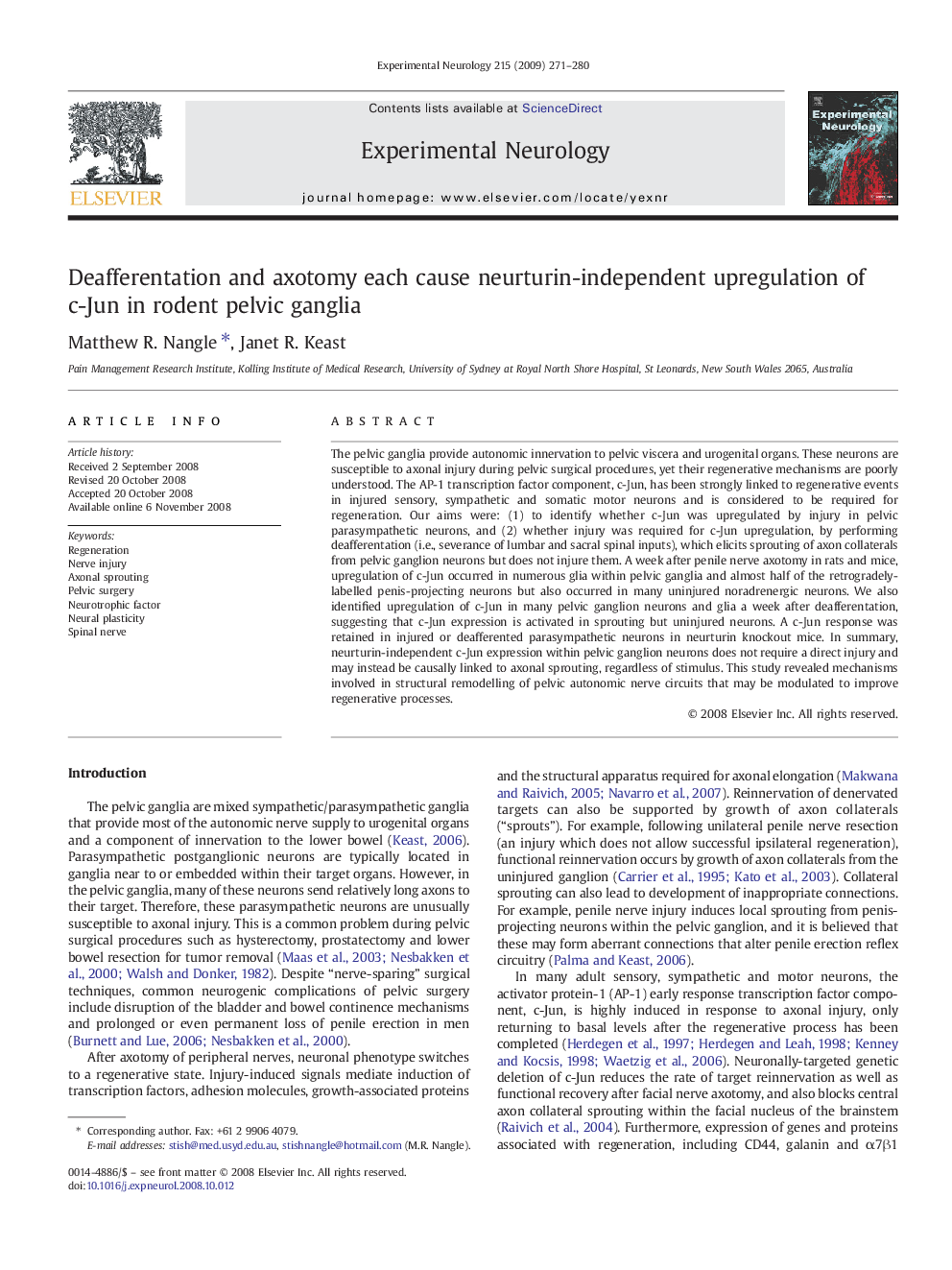| Article ID | Journal | Published Year | Pages | File Type |
|---|---|---|---|---|
| 3056630 | Experimental Neurology | 2009 | 10 Pages |
The pelvic ganglia provide autonomic innervation to pelvic viscera and urogenital organs. These neurons are susceptible to axonal injury during pelvic surgical procedures, yet their regenerative mechanisms are poorly understood. The AP-1 transcription factor component, c-Jun, has been strongly linked to regenerative events in injured sensory, sympathetic and somatic motor neurons and is considered to be required for regeneration. Our aims were: (1) to identify whether c-Jun was upregulated by injury in pelvic parasympathetic neurons, and (2) whether injury was required for c-Jun upregulation, by performing deafferentation (i.e., severance of lumbar and sacral spinal inputs), which elicits sprouting of axon collaterals from pelvic ganglion neurons but does not injure them. A week after penile nerve axotomy in rats and mice, upregulation of c-Jun occurred in numerous glia within pelvic ganglia and almost half of the retrogradely-labelled penis-projecting neurons but also occurred in many uninjured noradrenergic neurons. We also identified upregulation of c-Jun in many pelvic ganglion neurons and glia a week after deafferentation, suggesting that c-Jun expression is activated in sprouting but uninjured neurons. A c-Jun response was retained in injured or deafferented parasympathetic neurons in neurturin knockout mice. In summary, neurturin-independent c-Jun expression within pelvic ganglion neurons does not require a direct injury and may instead be causally linked to axonal sprouting, regardless of stimulus. This study revealed mechanisms involved in structural remodelling of pelvic autonomic nerve circuits that may be modulated to improve regenerative processes.
